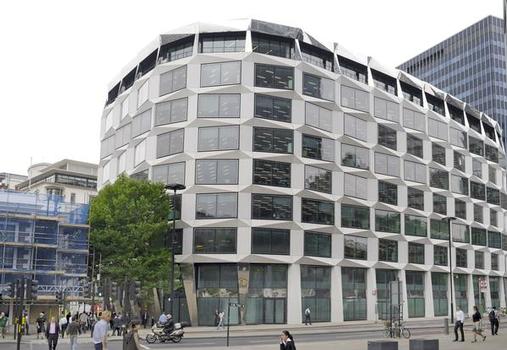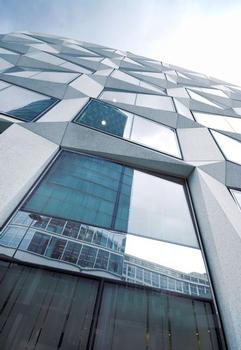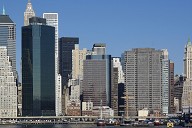Glass crystal in the heart of London
Like a huge crystal, in London’s historic centre - the nine-storey office building at One Coleman Street impresses with its unique vitreous facade. Each of the solar control glass panes is tilted at a different angle, in which the structural glazing was glued to the frame construction without any visible fasteners. None of the "prefab” steel parts were used more than six times. In spite of all these variations, the geometric shapes provide for an overall spatial symmetry. The building, however, also meets the highest technical demands: 3,000 square metres of solar control glazing (ipasol neutral 68/37) allow a lot of daylight into the building, in turn preventing the rooms from heating up too much in the summer and also providing effective thermal insulation on cold days.
Exactly 425 white, sculpture-like "prefab” parts along with 3,000 square metres of solar control glazing were used for this unconventional office building that is owned by Union Investment Real Estate AG at One Coleman Street in London’s financial district. In many cases, prefab parts were used in order to keep the costs down. David Walker Architects, on the other hand, use this system to create their steel "sculptures” with colour-neutral solar control glazing (ipasol neutral 68/37) for a unique crystal-like appearance. No shape is used more than six times and by rotating the parts at different angles, the facade looks extremely versatile.
Due to the even white areas and colour-neutral glazing, the offices themselves also look like the inside of a crystal. The transparent material not only provides a 360 degree view over the historic financial centre of London, but the rooms are also flooded with daylight in order to reduce the need for artificial illumination and for a nicer atmosphere inside.
Symbiosis of aesthetics and technology
The building is not only extremely aesthetically pleasing but also sets a technological example. The harmonic appearance of the facade is achieved by means of structural glazing: No mechanical fixtures are visible from the outside were used for fastening the individual glass panes. Instead, they were glued to the frame structure on all four sides. Solar control glazing (ipasol neutral 68/37) by Interpane prevents the offices from overheating in the summer without a major impact on the light transmittance:
- One outstanding characteristic of this type of glazing is the selectivity of S = 1.84. For a colour-neutral glazing, this is a value that is close to physical feasibility. The high light transmission (tL = 68%) leads to bright rooms and the g-value of 37 % (as per EN 410) is low enough for London's weather conditions.
- The extremely thin coating on the inside of the outer pane selects the incident solar rays and makes for an ideal indoor climate. While, for the most part, long-wave heat rays are reflected, in which the short-wave part (visible light) can pass through the layer virtually unobstructed. The low light reflection to the outside (10% as per EN 410) minimises the mirror effects.
- The low Ug-value (1.1 W/m2K as per EN 673) provides for effective heat insulation. It is in this way that the energy properties of the glazing lower the operational costs, protect the environment, and because of the high amount of daylight and the low reflection, they also increase the well-being of the people inside the offices.
Structure Types
- About this
data sheet - Product-ID
6261 - Published on:
14/05/2013 - Last updated on:
20/03/2022



